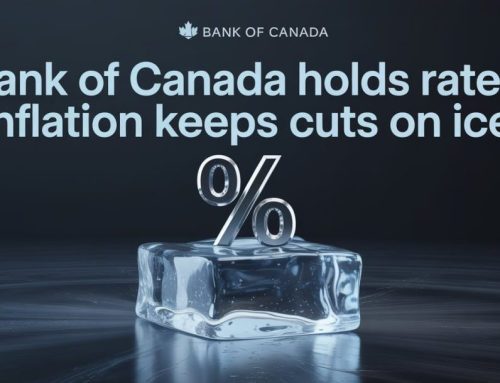Yesterday’s highly anticipated CPI inflation report revealed a drop of 1.00%. This brings it down to 3.40% which is the first time it has been in the 3% range in nearly two years. This is great news, but it doesn’t come as a surprise as it was in line with what was expected.
Inflation has come down substantially since it reached a high of 8.1% in June 2022 which is great, but there is still a long way to go before it reaches the Bank of Canada’s goal of 2%.
Ironically, higher mortgage rates are a significant driver of inflation. The Bank of Canada needs to see inflation lower, yet they keep fuelling it by hiking rates…and it looks like they will be hiking their rate again. Another 0.25% is widely expected on July 12th. If the Bank of Canada leaves it unchanged, then they will likely proceed with the hike in September.
Current Forecasts from the Big Six Banks
For over a year, it’s been expected that the Bank of Canada will start cutting their rate in 2024. The table below shows the current forecasts from the big six banks.
| Q3 2023 | Q4 2023 | Q1 2024 | Q2 2024 | Q3 2024 | Q4 2024 | 2024 Total | |
| BMO | +0.25% | N/C | -0.25% | -0.25% | -0.25% | -0.25% | -1.00% |
| NATIONAL | +0.25% | N/C | -0.25% | -0.50% | -0.25% | -0.25% | -1.50% |
| CIBC | +0.25% | N/C | N/C | -0.50% | -0.75% | -0.25% | -1.50% |
| RBC | +0.25% | N/C | N/C | -0.50% | -0.50% | -0.50% | -1.50% |
| Scotiabank | +0.25% | N/C | N/C | -0.25% | -0.50% | -0.50% | -1.25% |
| TD | +0.25% | N/C | N/C | -0.50% | -0.50% | -0.50% | -1.50% |
These are the forecasts as of today. They can and do change, and everything is subject to how quickly the Bank of Canada can get inflation under control.
Fixed Mortgage Rates
As I say time and time again, fixed mortgage rates are heavily influenced by bond yields. It was starting to look as though the upward trend in yields was not letting up. But fortunately, they have now fallen off their high 16 year high and have been falling for the past week. While this is promising, they would need to continue to fall before we see any downward movement in fixed rates. For now, it appears that fixed rates have at least stabilized.
The next jobs report is scheduled to be released on July 7th. If the unemployment numbers increase, then this would be good news for inflation. In turn, bond yields should continue to fall, which should then start putting downward pressure on fixed rates.
Conclusion
While inflation has decreased, the road to achieving the Bank of Canada’s inflation target is ongoing. Observing the movement of bond yields and upcoming indicators, such as the jobs report, will provide a clearer picture of how mortgage rates may be affected in the future.
As always, time will tell, and anything can happen.







